Table of Contents
Plastic is all around us; sometimes, it can even be hard to tell whether or not an item is made of plastic. Most of us would like to be plastic-free when it comes to our bodies, but you might be surprised by this list of objects made of plastic and where they can sneak into our life.

Chewing Gum
Believe it or not, what you are chewing is a type of plastic that contributes to 105 tonnes of plastic trash each year, often discarded carelessly.
Chewing gum goes back 9000 years, when people chewed tree bark and sap, which had health benefits and even helped keep their teeth clean.
Modern gum bases combine plasticizers with artificial sweeteners, flavors, and softeners. Polyvinyl acetate, one of the ingredients found in gum, has even been linked to being a possible carcinogen.
Maybe you will think twice before putting this sweet plastic into your mouth—definitely a good idea to throw it in the trash can and not toss it into the environment.
It has been known to fill up the stomachs of birds that see it as food. Sadly they will starve to death with empty stomachs filled with chewing gum.
Learn more about chewing gum and whether it is biodegradable in this article.
Alternatively, you can opt for some of these chewing gum brands that offer plastic-free alternatives because let’s face it, who likes chewing plastic?
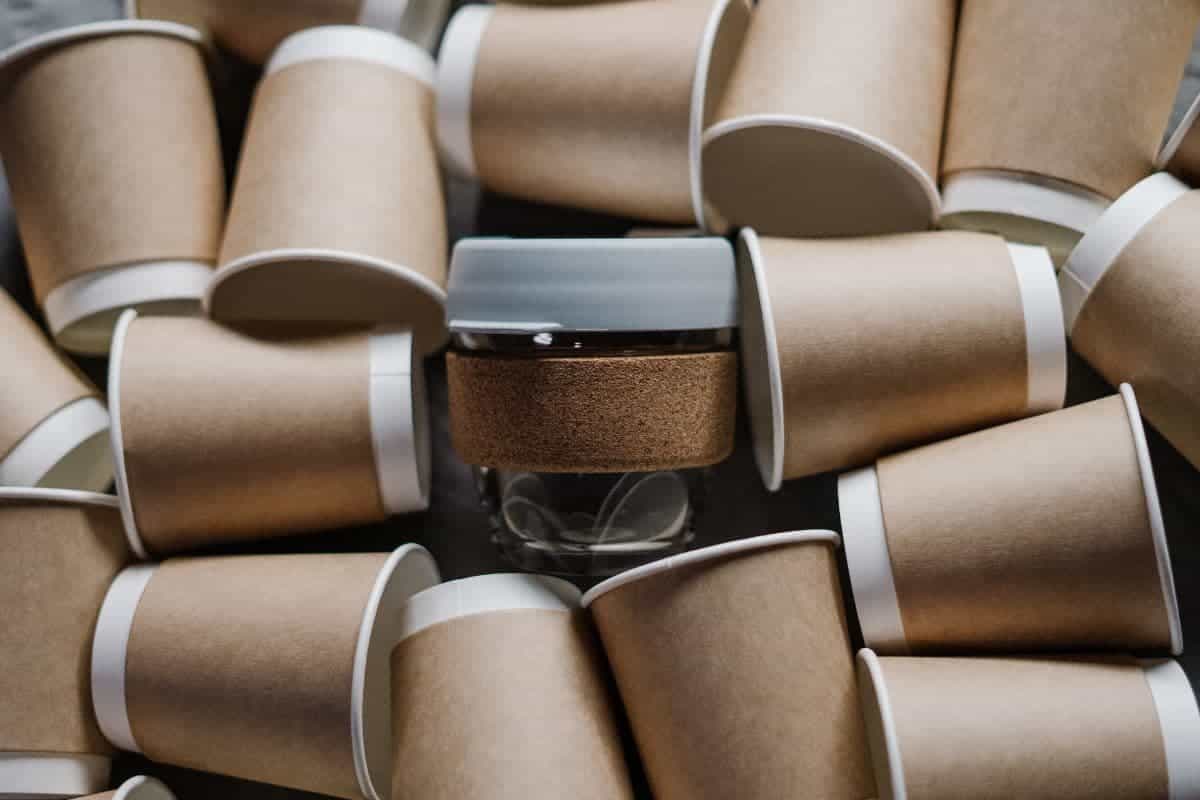
Coffee Cups and Paper Cups
As misleading the name suggests, paper cups and disposable coffee cups aren’t only made of paper, and they are lined with a thin layer of plastic to stop the liquid from leaking.
The problem is that trillions of microplastics are released into your drink as soon as you add a hot beverage to your cup. These chemicals have been linked to cancers and endocrine disrupters, making your favorite drink a potential cocktail of sickness.
Accessibly sustainable alternatives are:
Glass, steel, ceramic or copper cups to choose from that, in the case of copper, even have health benefits.
The most specific change you can make is to bring a reusable coffee cup to the coffee shops.
I have written many articles about the best reusable coffee cups for on-the-go that you can read here.
Worst of all, your paper cup can not be recycled, even if it clearly states it is recyclable or made from bio-plastic. The sad news is that it rarely finds its way into the recycling bin, and even if it does, most recycling facilities burn it since it is too costly and difficult to separate the paper from the plastic adding to plastic pollution.
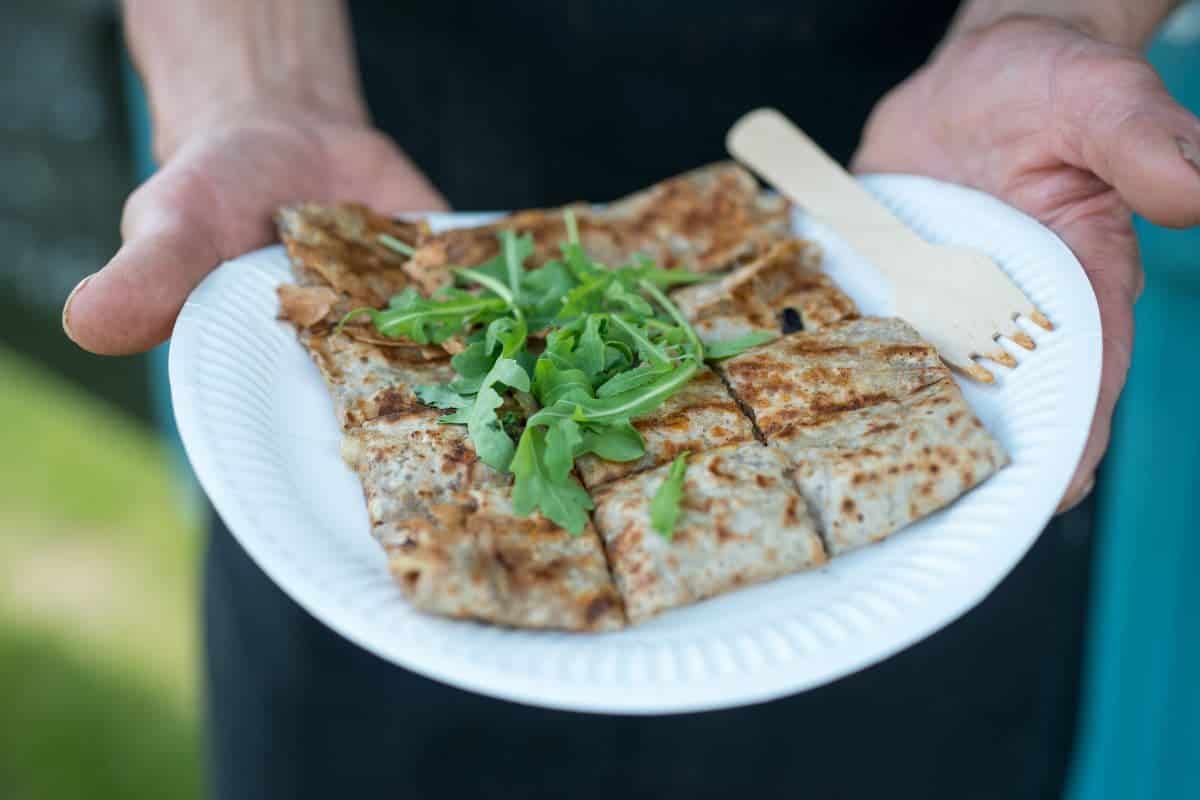
Paper plates
The same goes for paper plates; they also have thin layers of plastic coating around them, making them unrecyclable.
A plastic-free alternative is metal plates, as they don’t easily break and can be reused over and over. Yes, you have to wash them at the end of your party.
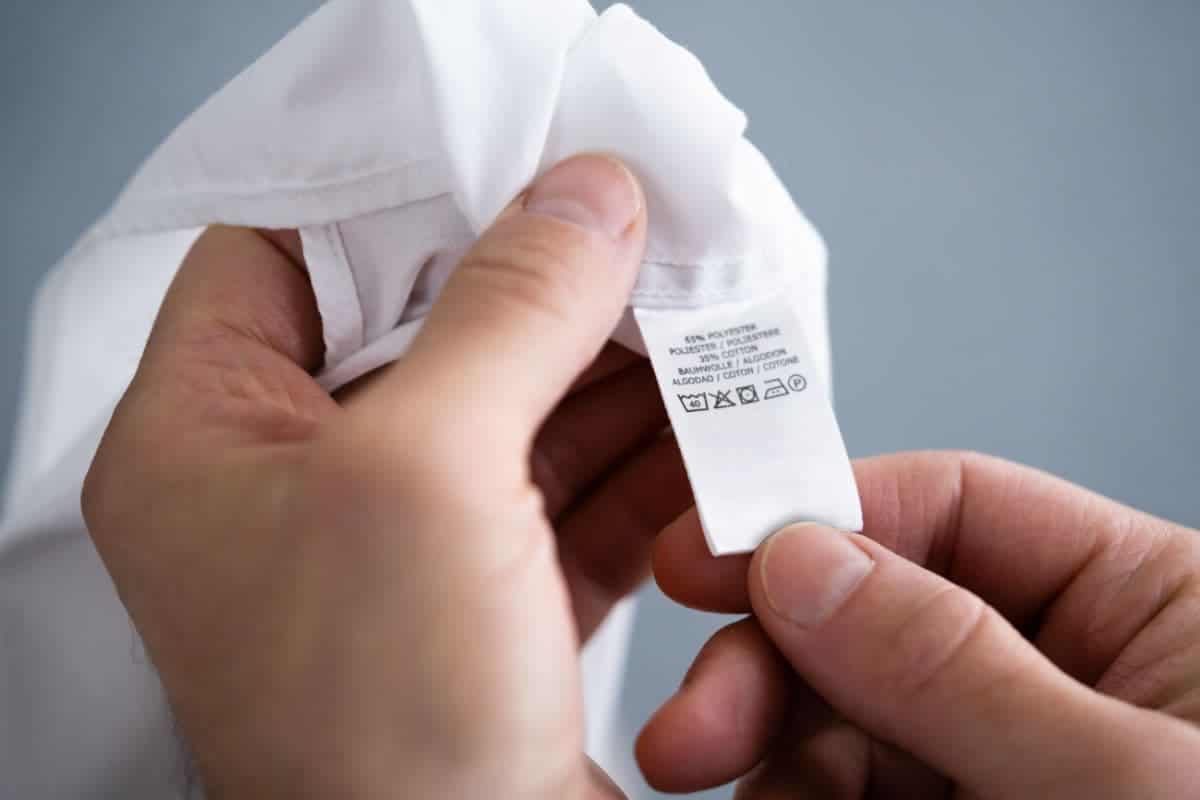
Clothing
When you hear synthetic fabrics, like nylon, acrylic or polyester, most people think of activewear and bathing suits, but did you know that to make these clothes, we have to pump oil from the ground and, through a chemical process, turn it into polymers that become the different materials we call synthetic fibers?
Most of us didn’t know that all fibers break apart when washed, and I mean that our synthetic clothes lose tiny microfibers, which are washed out to sea during each wash cycle. That is because most recycling facilities can not catch those fibers, so they make it straight into the ocean.
This wouldn’t be a big problem if our clothes were made with natural fibers. But that isn’t the case anymore. Try finding a pair of socks without any elastane in them.
Thankfully, I made a list of socks that are more environmentally friendly than most socks in your Walmart, but even those contain some form of synthetic fiber.
Alternatives for your wardrobe:
Plenty of companies make beautiful clothes from natural fiber, have ethical standards, and pay fair wages.
If you are looking for ethical swimwear, take a look at this article.
For a capsule wardrobe, have a look here.
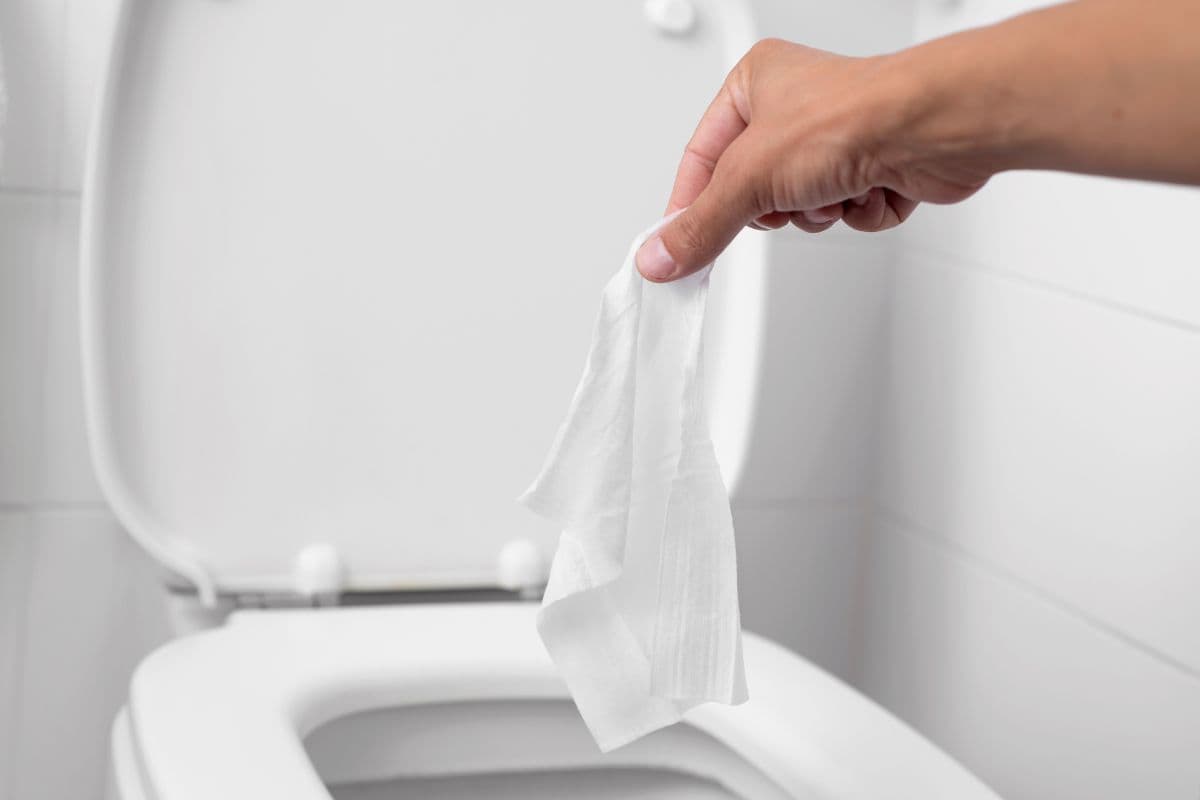
Disposable Wipes
I am guilty of flushing wipes down the toilet just like I do with toilet paper. It turns out that wet wipes are the most significant cause of clogged drains and extra plastic waste in the ocean.
This one got me making my wipes. Since we have a three-year-old, we quickly learned that wipes come in handy.
However, most baby wipes are made from non-woven materials such as cotton, polyester, wool and similar materials. This isn’t a problem until you mix polyester into the fabric.
Polyester doesn’t biodegrade, nor is it excellent on your baby’s bum.
The sustainable alternatives are:
You can make your disposable baby wipes simply by using a paper towel; yes, this is the only time I recommend buying paper towels, and they are just a little thicker and more durable when wiping bums.
Cut paper towel in half
use a cup of distilled water
add a tablespoon of coconut oil as a moisturizer
add a few drops of essential oil 5-7
add some liquid soap
put everything in a plastic container (reusable)
You’re done. You just made some wipes that you can even flush down the toilet.

Canned Drinks
Ah, that fresh cold beer or the satisfying coke after a big day tastes so good. But did you know those aluminum cans are lined with a thin plastic lining?
Here is an excellent video that shows exactly what I mean.
The area is lined with plastic so that the drink’s flavor doesn’t change and the can doesn’t start to rust.
Sadly, that also means that we are drinking plastic, or more so, the chemicals that make up plastic leach into the beverage. This happens especially when the drink is stored in the can for a long time and undergoes temperature swings.
PLAs and Corn-Based Biodegradable Packaging
PLA or polylactic acid is often used in packaging, medical applications or 3D printing, as it is easily molded and can be painted or sanded.
Even though PLA is derived from plants such as corn, cassava, or sugar cane, it is not that black and white regarding recycling.
If you want to learn more about PLA plastic, you can read this post.
In a nutshell, it is only biodegradable in a specific facility and, in most cases, does not find its way there. It is hard to differentiate between all the types of plastic, which makes it very costly and inefficient to do when trying to recycle it.
Alternative:
Avoid plastic packaging as much as possible, and use reusable containers instead. There are plenty of options out there.
This is one of our favorites. Eco Lunch Box
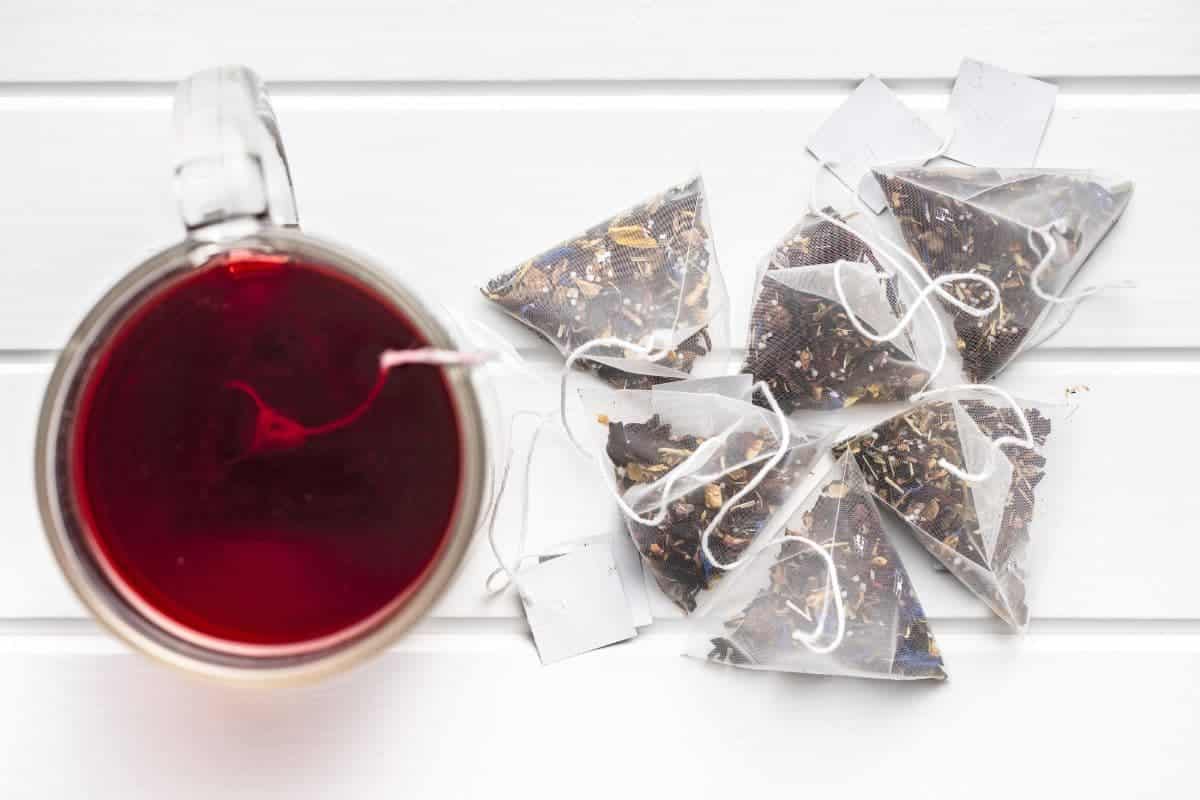
Tea Bags
Tea bags often contain plastic, according to ScienceDirect; this comes as a tiny dot of polyurethane glue to keep the bags shut.
Others, the more fancy-looking pyramid shapes, are often entirely made of plastic. They look nice but don’t be fooled. Your tea has become a mix of chemicals that are not making you stronger if you know what I mean.
Especially when pouring hot water over the tea bags, they release millions of plastic particles.
I wrote an article about alternatives to tea bags which you can find here.
The best alternative and the freshest best-tasting tea you get is when you buy loose-leaf tea.

Wrapping Paper and Gift Bags
Wrapping paper can come as foil or glitter-decorated paper and is not recyclable. It can sometimes be laminated with plastic or metals, making recycling complicated, and usually, it ends up straight in landfills.
Here are some sustainable alternatives to gift wrapping paper:
Reuse old newspaper
Furoshiki Fabric Wrapping
reusable containers
old cardboard
anything that you have lying around

Kitchen Sponge
You probably never questioned what your kitchen sponge is made of, and I never had until I started my life as a zerowasteman. It turns out your kitchen sponge is made from plastic.
But there are many easy replacements that you can use.
I have tried the coconut husk sponge, and it worked great. My concern was that it would disintegrate too quickly, but that was not the case, and it lasted for about two months.
I also added the Redecker brush that helps get in the bottles and those hard-to-reach spots you can’t get with a sponge.
Kitchen Cloth
If you already replaced your paper towel with kitchen clothes, hat off. But did you know that if you got the dishcloths from your supermarket, they are most likely made of plastic?
I bought some once, and it looked all-natural and came in green packaging, but I got fooled.
Swedish dishcloth seems to be the only one that holds up to its name and make out of cellulose that is 100% biodegradable.
Gift Cards
Gift cards are made from PVC. Billions of these gift cards are produced annually and handed out like hot cookies. I still have a collection of them, which I have never even used.
Best to say no thanks when someone offers you these little plastic cards.
Alternatively, you can stamp them into guitar picks and start a little site business.

Toothpaste
That sounds wrong, but many toothpaste and other dental care products contain microbeads. Not only is the tube made of plastic, but the paste itself also is not free of it.
Terracyle has a program where they recycle toothpaste tubes and turn them into something useful. But for the microbeads, it is best to change to a brand that doesn’t contain plastic.
Here are some alternative brands to choose from.
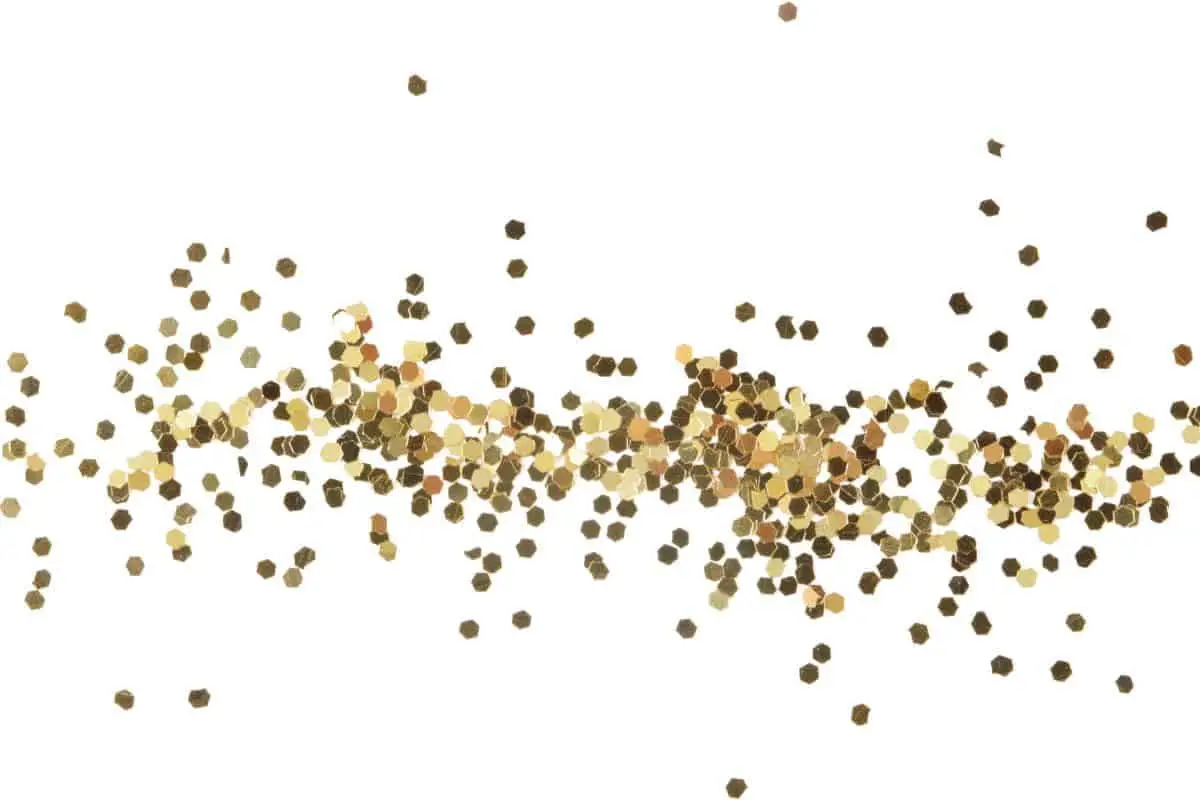
Glitter
Glitter is just tiny pieces of shiny plastic. Best to avoid it at all since it is small and easily slips into our waterways. You may have heard about biodegradable glitter, but it isn’t as biodegradable as you think.
Biodegradable glitter is only degradable when it ends up in an industrial composting facility to break down. If left in the environment, it is plastic pollution.
Plastic-free alternatives would be to use paint or soap bubbles, or you could stamp out dried leaves.
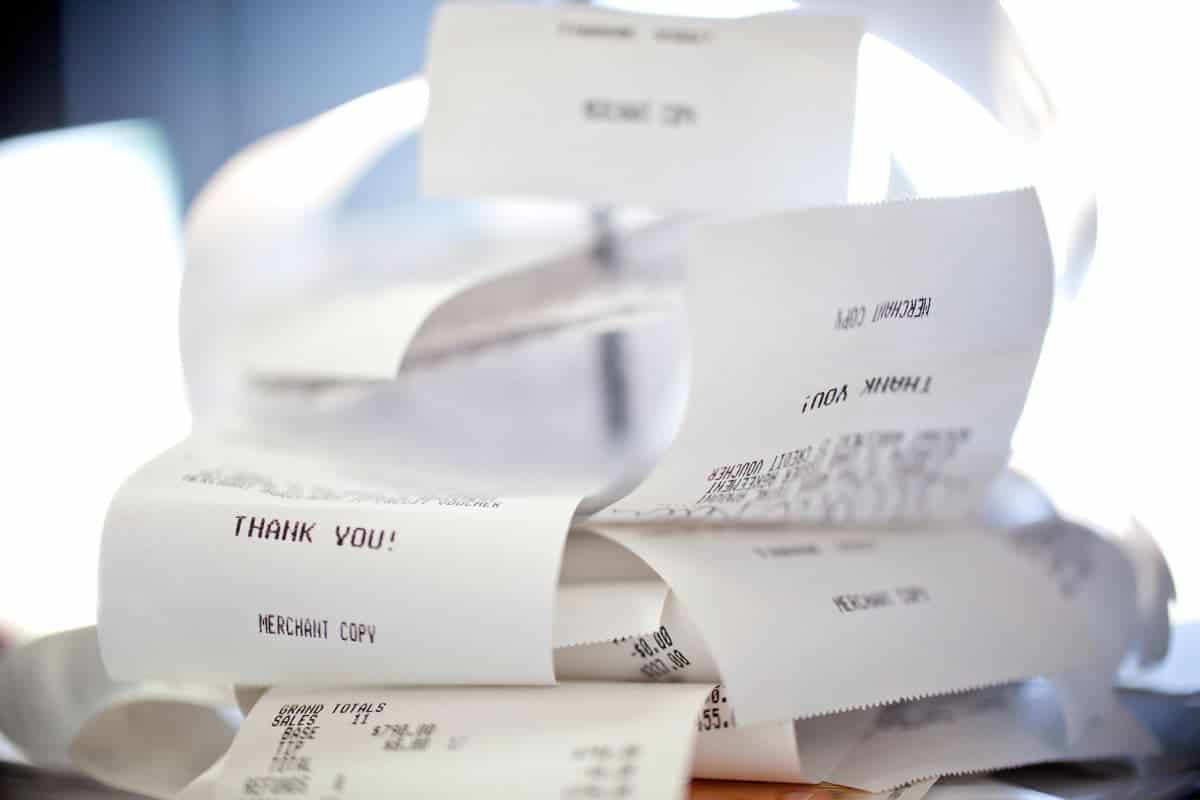
Receipts
A study found that cashiers handling receipts often contain more BPA in their blood than the average person. To print them quickly and without using ink, the receipt paper is coated with thermal plastic to make them printable.
But how do you avoid receipts?
This is where technology comes in. You can ask for an emailed receipt or take a picture of the receipt and leave it behind.
Produce Stickers
While some companies make stickers from recycled material, they all require the so-called backing paper. This is the paper the sticker is adhered to when you peel it off. It has a silicone layer, so it peels off easily without losing the ability to stick.
These papers are not biodegradable, making stickers a plastic-based material. Most of them are made of PVC and other plastic materials.
If you are interested in finding out if eco-friendly stickers exist, have a look at this article.
Alternatives are laser printing.
Glass Jars with Lids
I swear by our mason jars and love them to store food and drinks. You can use multiple lids with reusable straws or even sippy cup options for our kids.
But the glass jar lids contain plastic to help seal them better. It’s fine since you will be reusing them over and over.
Learn more about unusual ways to use mason glass jars in this article.
Paint
Paint consists of a resin (polymer) similar to microplastic, and because it is tiny, it is often overlooked in the pool of microplastic pollution. This article goes more in-depth.
Avoid Latex paints and acrylic paint.
Water-based paint is more environmentally friendly but not perfect either.
Cutting Boards
This is pretty obvious when you buy a cutting board that is made of plastic. The problem is that when you cut anything on your plastic board, little plastic fragments break off and enter your food.
A plastic-free alternative is to opt for wooden boards that aren’t coated with any resin. Some, like Camphor, are naturally anti-bacterial, making them an excellent option for chopping boards.
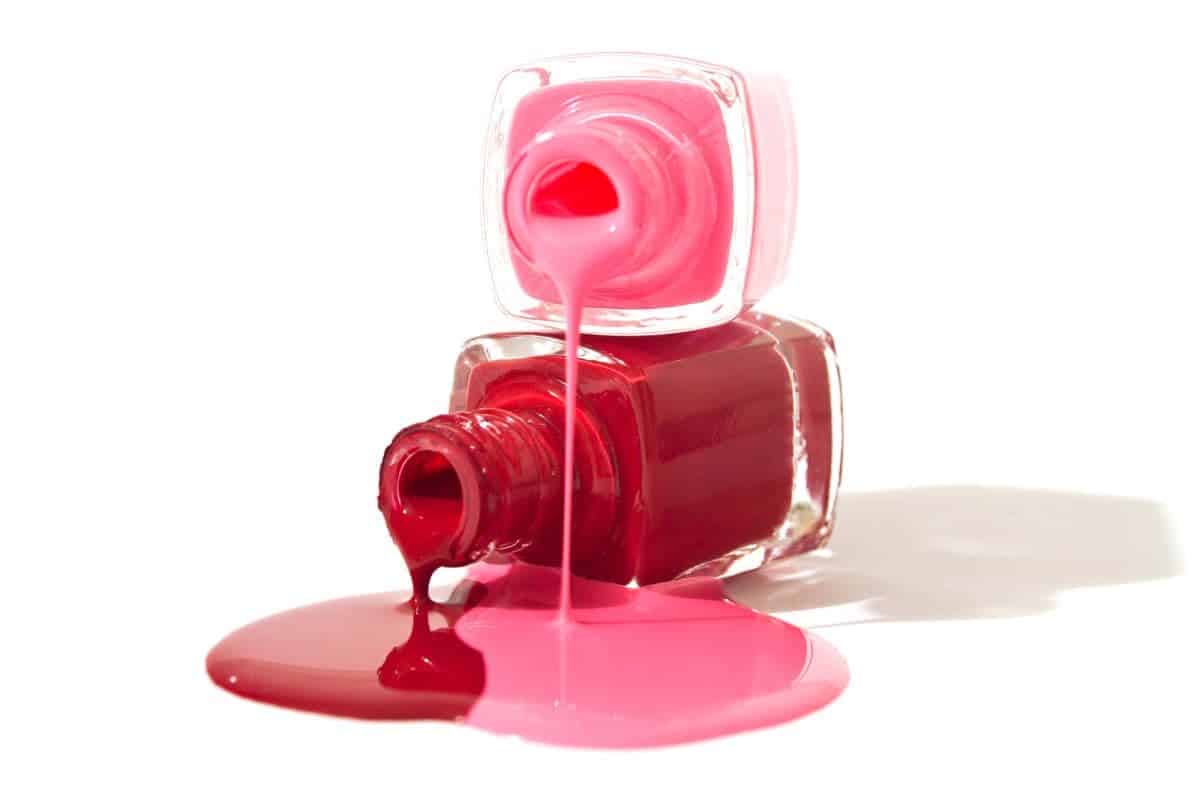
Nail Polish
Well, just recently, my daughter started painting my nails, and I wasn’t too surprised that nail polish contains a thermosetting polymer. Plastic nail extensions and polish are considered single-use plastic and contribute to the microplastic problem.
Many polishes also contain glitter, which is made of PET (polyethylene terephthalate).
The going zero waste blog has a list of eco-friendly nail polish.

Sunscreen
I was also surprised when I learned that most sunscreen brands contain microbeads. These are little plastic beads that help to hold the ingredients of the product together, forming a thin coating on your skin and adding waterproof properties.
In the end, it is a way for the companies making sunscreen to cut costs on more expensive ingredients. Luckily I wrote an article about reef-safe sunscreen here.
Tetra Paks
Oh, good old tetra paks, we can’t seem to live without them. Even I still keep buying coconut milk in Tetra Paks. Even though they are not only made of plastic but are made of many materials that are very hard to almost impossible to recycle.
Different paper, metal, and plastic layers are glued together and rarely separated and reused afterward.
Plastic-free alternative:
This one is tricky since most of us don’t want to give up our favorite beverage, and making coconut milk doesn’t seem easy.
Milk, orange juice and other drinks are easier to get in glass bottles or containers.
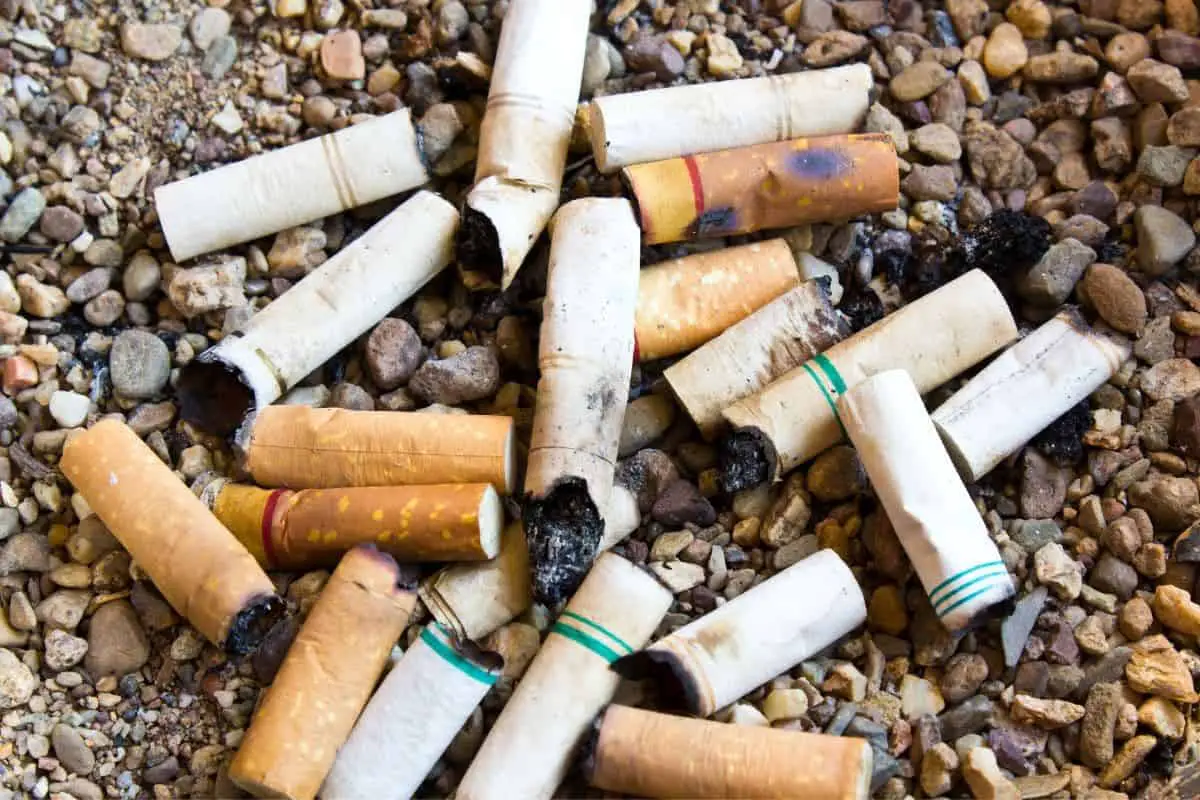
Cigarette butts
Buttons are one of the most polluting items in the world and are often overlooked or even accepted as a form of littering. A study even found that using a filter on your cigarette makes no difference to the number of toxins you are inhaling it was simply a marketing strategy.
If you want to learn more about how bad cigarette butts are, check out the article from ScienceDirect.
Water
Yes, water contains microplastic. Too small to see with our eyes, but it’s there. More than 80% of our drinking water has been found to have microplastic inside.
The only solution we have is to filter the water that you drink. Here is an article to find the best water filter for your needs.
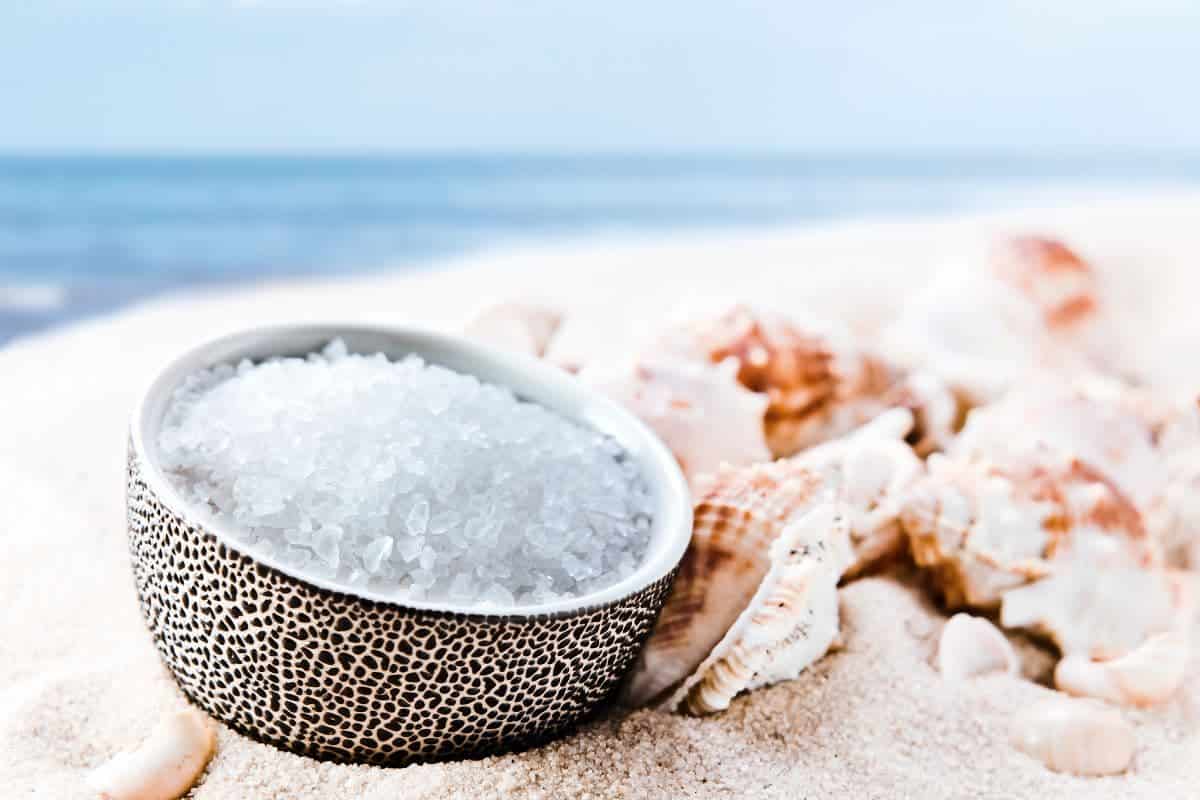
Sea Salt
This should come as a shock to you since sea salt is harvested from our oceans. If you have followed this blog, you know that our oceans are becoming a plastic soup.
Take the ocean out of its element and dry it up. You get salt and microplastic.
Find which salt is safe from microplastic in this article. In a nutshell getting salt from caves, where the salt has been hidden deep in the rock, aka rock salt. Like Himalayan salt, you are less likely to have microplastic inside.
Fish
Of course, fish is not plastic-free.
It has to be on this list, but this may not surprise you since sea salt is contaminated with microplastic fish, and almost anything from the ocean has microplastic. Sadly, the only alternative is to eat less fish, particularly the kind that is a bottom eater, like shrimp and other crustacea and fish that hunt other small fish, like tuna and salmon.
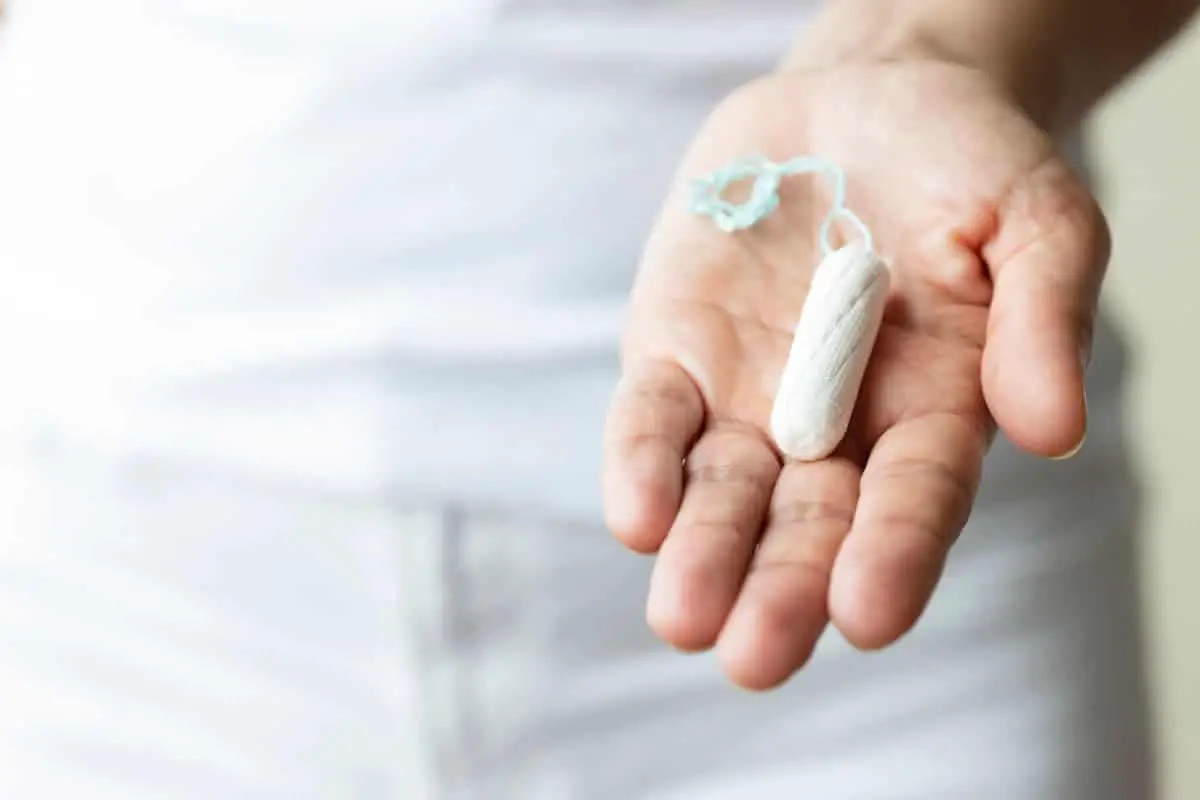
Tampons
This one shocked me even more because they are tampons and women insert them into their bodies. The tampon is wrapped in plastic, has a plastic string attached to it, and often contains plastic inside the pad.
According to this national geographic article, period pads are even worse, from the leak-proof base to synthetics that absorb fluid.
Alternatives:
Reusable period underwear
reusable pads and menstrual cups like the diva cup are all zero-waste options
Air
Yes, there are hidden plastics in the air. Just driving our cars releases microplastic from the tires. Where do you think this stuff ends up?
Fragments about 5mm and under have been found just about anywhere in the atmosphere, according to these scientists.
Our clothes release microfibers, and your carpets, when disturbed, release microplastic.
The best option is to buy fewer plastic products.
But why is it so dangerous
Plastic particles are hazardous for two reasons:
They can absorb PBC and bacteria higher than their surrounding environment
They can leach synthetic additives, like phthalates, PBDEs, and bisphenol A.
These days you can find plastic in almost anything. We must make conscious decisions to reduce our plastic intake and live healthier lives.
Most of the time, it is worth paying the extra cost for high-quality products made from natural materials that also last longer. Buy less and buy more high quality; in the end, you pay the same amount of money, but you have less rubbish in your body.
